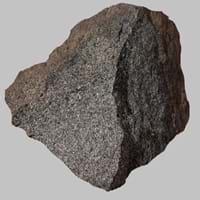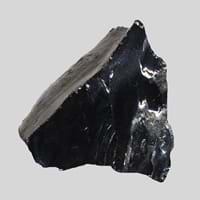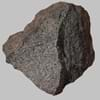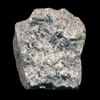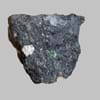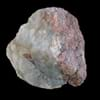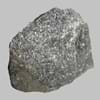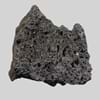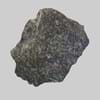Definition
Gabbro is an intrusive igneous rock which is chemically equivalent to plutonic Basalt
Anthracite is a type of sedimentary rock which is hard and is variety of coal that has high luster
Origin
Germany
Pennsylvania, U.S.
Discoverer
Christian Leopold von Buch
Unknown
Etymology
From Latin glaber bare, smooth, bald
From Greek anthrakites, from anthrax, anthrak meaning coal
Class
Igneous Rocks
Metamorphic Rocks
Sub-Class
Durable Rock, Hard Rock
Durable Rock, Soft Rock
Group
Plutonic
Not Applicable
Other Categories
Coarse Grained Rock, Opaque Rock
Coarse Grained Rock, Fine Grained Rock, Medium Grained Rock, Opaque Rock
Texture
Phaneritic
Amorphous, Glassy
Color
Dark Grey to Black
Black, Brown, Dark Brown, Grey, Light to Dark Grey
Durability
Durable
Durable
Appearance
Veined and Shiny
Veined or Pebbled
Interior Uses
Countertops, Decorative Aggregates, Homes, Interior Decoration
Not Yet Used
Exterior Uses
As Building Stone, As Facing Stone, Garden Decoration, Office Buildings, Paving Stone
Not Yet Used
Other Architectural Uses
Curbing
Not Yet Used
Construction Industry
As Dimension Stone, Building houses or walls, Cement Manufacture, Construction Aggregate, for Road Aggregate
Cement Manufacture, for Road Aggregate, Making natural cement, Steel Production
Medical Industry
Not Yet Used
In Chemical and Pharmaceutical Industry, Manufacture of Aspirins
Antiquity Uses
Artifacts, Monuments, Sculpture
Not Yet Used
Commercial Uses
Cemetery Markers, Commemorative Tablets, Laboratory bench tops, Jewelry, Sea Defence, Tombstones
Alumina Refineries, Electricity Generation, Liquid Fuel, Manufacture of Soap, Solvents, Dyes, Plastics and Fibres, Paper Industry
Types
Not Available
Semi-anthracite and Meta-anthracite
Features
Smooth to touch
Helps in production of Heat and Electricity, Used as fossil fuel
Archaeological Significance
Monuments
Used
Not Yet Used
Famous Monuments
Data Not Available
Not Applicable
Sculpture
Used
Not Yet Used
Famous Sculptures
Data Not Available
Not Applicable
Pictographs
Not Used
Used
Petroglyphs
Not Used
Used
Figurines
Used
Not Yet Used
Formation
Gabbro, a mafic rock, forms due to cooling and crystallization of magma underneath Earth's surface.
Anthracite forms from the accumulation of plant debris in a swamp environment. When plant debris dies and falls into the swamp, the standing water of the swamp protects it from decay.
Mineral Content
Augite, Olivine, Plagioclase, Pyroxene
Calcite, Clay, Clay Minerals
Compound Content
Aluminium Oxide, CaO, Chromium(III) Oxide, Iron(III) Oxide, Potassium Oxide, MgO, Sodium Oxide, Silicon Dioxide, Sulfur Trioxide
Carbon, Hydrogen, Nitrogen, Oxygen, Sulphur
Types of Metamorphism
Impact Metamorphism
Burial Metamorphism, Contact Metamorphism, Regional Metamorphism
Types of Weathering
Chemical Weathering
Not Applicable
Types of Erosion
Coastal Erosion
Not Applicable
Grain Size
Coarse Grained
Medium to Fine Coarse Grained
Fracture
Conchoidal
Conchoidal
Porosity
Highly Porous
Less Porous
Luster
Not Available
Shiny
Compressive Strength
Not Available
Cleavage
Not Available
Non-Existent
Toughness
1.6
Not Available
Specific Gravity
2.86-2.87
1.1-1.4
Transparency
Opaque
Opaque
Density
2.7-3.3 g/cm3
1.25-2.5 g/cm3
Specific Heat Capacity
Not Available
Resistance
Impact Resistant, Pressure Resistant, Wear Resistant
Heat Resistant, Water Resistant
Deposits in Eastern Continents
Asia
India, Russia
Bangladesh, Burma, Cambodia, China, India, Indonesia, Kazakhstan, Malaysia, Mongolia, Pakistan, Turkey, Vietnam
Africa
South Africa
Botswana, Kenya, Morocco, Mozambique, South Africa, Tanzania
Europe
Germany, Greece, Italy, Scotland, Turkey
Belgium, Bulgaria, England, France, Germany, Greece, Hungary, Kosovo, Netherlands, Norway, Poland, Romania, Serbia, Slovakia, Slovenia, The Czech Republic, Ukraine, United Kingdom
Others
Greenland
Not Yet Found
Deposits in Western Continents
North America
Canada, USA
Canada, Mexico, USA
South America
Brazil, Colombia, Venezuela
Brazil, Chile, Colombia, Venezuela
Deposits in Oceania Continent
Australia
New Zealand, Queensland
New South Wales, Queensland, Victoria
All about Gabbro and Anthracite Properties
Know all about Gabbro and Anthracite properties here. All properties of rocks are important as they define the type of rock and its application. Gabbro belongs to Igneous Rocks while Anthracite belongs to Metamorphic Rocks.Texture of Gabbro is Phaneritic whereas that of Anthracite is Amorphous, Glassy. Gabbro appears Veined and Shiny and Anthracite appears Veined or Pebbled. The luster of Gabbro is not available while that of Anthracite is shiny. Gabbro is available in dark grey to black colors whereas Anthracite is available in black, brown, dark brown, grey, light to dark grey colors. The commercial uses of Gabbro are cemetery markers, commemorative tablets, laboratory bench tops, jewelry, sea defence, tombstones and that of Anthracite are alumina refineries, electricity generation, liquid fuel, manufacture of soap, solvents, dyes, plastics and fibres, paper industry.
